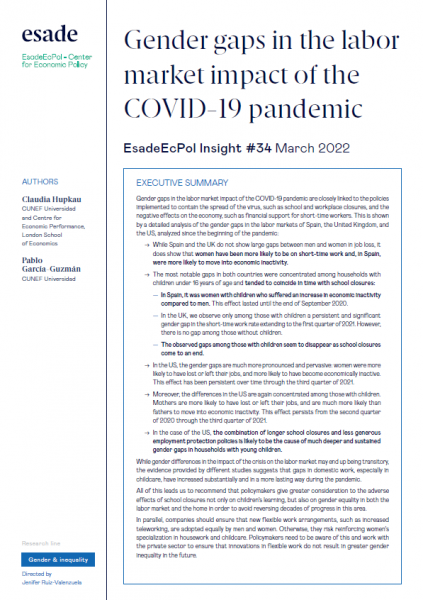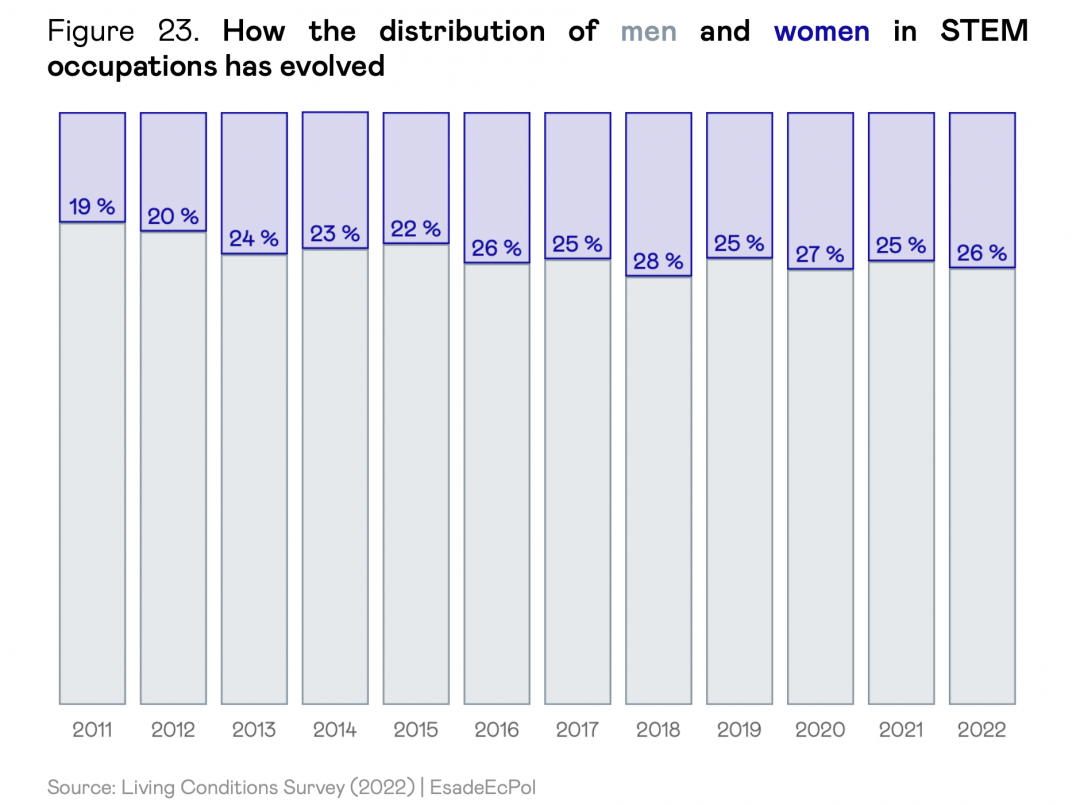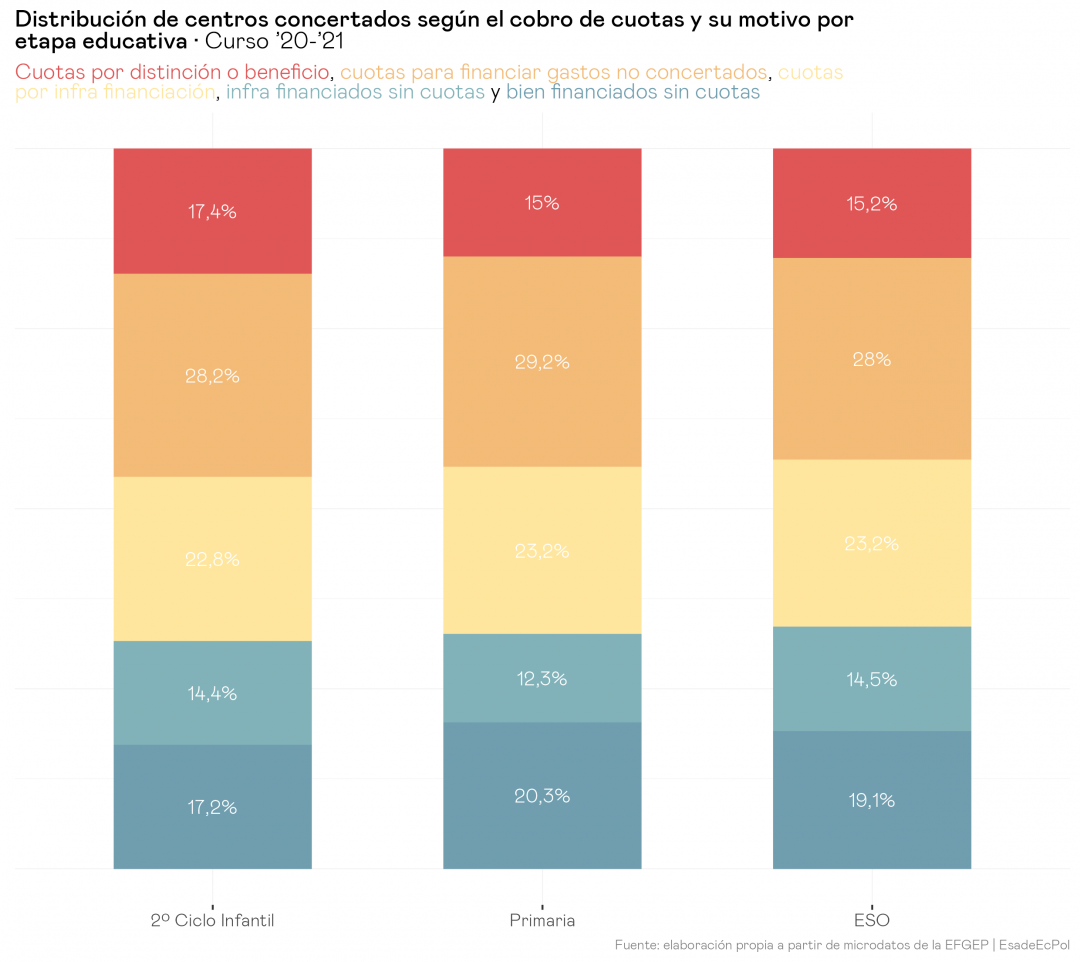
Gender gaps in the labor market impact of the COVID-19 pandemic
Claudia Hupkau, Pablo García-Guzmán
7 Mar, 2022
Gender gaps in the labor market impact of the COVID-19 pandemic are closely linked to the policies implemented to contain the spread of the virus, such as school and workplace closures, and the negative effects on the economy, such as financial support for short-time workers. This is shown by a detailed analysis of the gender gaps in the labor markets of Spain, the United Kingdom, and the US, analyzed since the beginning of the pandemic:
- While Spain and the UK do not show large gaps between men and women in job loss, it does show that women have been more likely to be on short-time work and, in Spain, were more likely to move into economic inactivity.
- The most notable gaps in both countries were concentrated among households with children under 16 years of age and tended to coincide in time with school closures:
→ In Spain, it was women with children who suffered an increase in economic inactivity compared to men. This effect lasted until the end of September 2020.
→ In the UK, we observe only among those with children a persistent and significant gender gap in the short-time work rate extending to the first quarter of 2021. However, there is no gap among those without children.
→ The observed gaps among those with children seem to disappear as school closures come to an end.
- In the US, the gender gaps are much more pronounced and pervasive: women were more likely to have lost or left their jobs, and more likely to have become economically inactive. This effect has been persistent over time through the third quarter of 2021.
- Moreover, the differences in the US are again concentrated among those with children. Mothers are more likely to have lost or left their jobs, and are much more likely than fathers to move into economic inactivity. This effect persists from the second quarter of 2020 through the third quarter of 2021.
- In the case of the US, the combination of longer school closures and less generous employment protection policies is likely to be the cause of much deeper and sustained gender gaps in households with young children.
While gender differences in the impact of the crisis on the labor market may end up being transitory, the evidence provided by different studies suggests that gaps in domestic work, especially in childcare, have increased substantially and in a more lasting way during the pandemic.
All of this leads us to recommend that policymakers give greater consideration to the adverse effects of school closures not only on children’s learning, but also on gender equality in both the labor market and the home in order to avoid reversing decades of progress in this area.
In parallel, companies should ensure that new flexible work arrangements, such as increased teleworking, are adopted equally by men and women. Otherwise, they risk reinforcing women’s specialization in housework and childcare. Policymakers need to be aware of this and work with the private sector to ensure that innovations in flexible work do not result in greater gender inequality in the future.


Assistant professor en CUNEF & associate en el Education and Skills Programme del Centre for Economic Performance (LSE)
View profile


